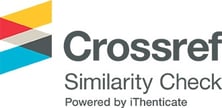Analisis Penilaian Persediaan Barang Dagang Pada Rozan Mini Market & Percetakan Sesuai Sak Etap
DOI:
10.33395/owner.v7i2.1286Keywords:
Inventory, first in first out, Average method, SAK ETAPAbstract
Inventory is one of the current assets that must be managed properly, especially for companies that have merchandise inventory. The purpose of this study was to determine the application of methods based on and assessment of goods according to ETAP CHAPTER 11 which are suitable for Rozan Mini Market & Printing. The data analysis technique with the inventory system used is the Perpetual System and the Inventory Method used is the FIFO Method and the Average Method. The types and sources of data used are primary data and secondary data. The conclusion obtained from the research that has been carried out is that Rozan Mini Market & printing in recording inventory has not yet Financial Accounting Standards for Public Accountability Entities (SAK ETAP) CHAPTER 11 and the application of Rozan Mini Market & printing applies a perpetual system, and the method used is the FIFO method, because the HPP according to the FIFO method tends to be smaller than the Average method
Downloads
Plum-X Analityc
References
Budianto, H., & Ferriswara, D. (2017). Penerapan Metode Pencatatan Dan Penilaian Persediaan Barang Menurut Sak Etap Pada CV. Tjipto Putra Mandiri Indonesia. Aplikasi Administrasi: Media Analisa Masalah Administrasi, 124–138.
Faud & Ramli, M. (2015). Akuntansi Perbankan: Pendekatan Sisi Praktik. Ghalia Indonesia.
Heizer, J., Render, B., Munson, C., & Sachan, A. (2017). Operations Management: Sustainability And Supply Chain Management, 12/E. Pearson Education.
Komite SPAP Ikatan Akuntan Indonesia (IAI). (2011). Standar Profesional Akuntan Publik. Jakarta?: Salemba Empat.
Lianta, M. A. S., & Baridwan, Z. (2011). Faktor-Faktor Sikap Yang Mempengaruhi Minat Penggunaan Internet Banking. Jurnal Akuntansi Multiparadigma, 2(2), 310–326.
Meidiyustiani, R. (2016). Pengaruh Modal Kerja, Ukuran Perusahaan, Pertumbuhan Penjualan Dan Likuiditas Terhadap Profitabilitas Pada Perusahaan Manufaktur Sektor Industri Barang Konsumsi Yang Terdaftar Di Bursa Efek Indonesia (BEI) Periode Tahun 2010--2014. Jurnal Akuntansi Dan Keuangan, 5(2), 41–59.
Prihatiningsih, E. (2020). Analisis Akuntansi Persediaan Pada Toko Kencana Samarinda. Jurnal Eksis, 14(2).
Pura, R. (2012). Pengantar Akuntansi 1 (Pendekatan Siklus Akuntansi), Erlangga. Jakarta.
Putra, I. M. (2017). Pengantar Akuntansi. Yogyakarta: Quadrant.
Reeve, J. M. (2018). Pengantar Akuntansi Adaptasi Indonesia Buku 2.
Sari, D. I. (2018). Analisis Perhitungan Persediaan Dengan Metode FIFO Dan Average Pada PT. Harapan. Jurnal Perspektif, 16(1), 31–38.
Warfield, T. D., Weygandt, J. J., & Kieso, D. E. (2007). Intermediate Accounting: Principles And Analysis. John Wiley & Sons.
Wuwungan, J. Y. S. (2015). Analisis Penerapan Standar Akuntansi Keuangan Entitas Tanpa Akuntabilitas Publik Atas Persediaan Pada Apotik Uno Medika. Jurnal EMBA: Jurnal Riset Ekonomi, Manajemen, Bisnis Dan Akuntansi, 3(4).
Downloads
Published
How to Cite
Issue
Section
License
Copyright (c) 2022 Tommy Kuncara, Fera Riske Anggita, Jessica Livia Utomo

This work is licensed under a Creative Commons Attribution-NonCommercial 4.0 International License.
















